AWS Certified Developer - Associate
Application Integrations
AWS Step Functions
In this lesson, we explore AWS Step Functions—a powerful service for orchestrating complex workflows in distributed applications. AWS Step Functions simplifies the management of processes such as order fulfillment, content compliance, credit checks, and more by integrating various AWS services seamlessly.
Why Use AWS Step Functions?
Imagine an e-commerce application that handles many interconnected services involved in order fulfillment. Consider the following steps that occur when a user places an order:
- The user submits the order.
- Payment processing is initiated and validated.
- An inventory check confirms that items are in stock.
- Upon successful inventory validation, a shipping label is generated.
- The customer is notified of the status with tracking information.
- The shipping process is started, and the order is dispatched.
- Finally, the order is marked as complete.
Managing such a workflow directly in your application can become complex and error-prone, especially when using stateless Lambda functions to perform each operation. AWS Step Functions addresses these challenges by:
- Orchestrating each step in the workflow.
- Providing built-in error handling with retries.
- Enabling parallel task execution.
- Offering a visual drag and drop editor for workflow configuration.
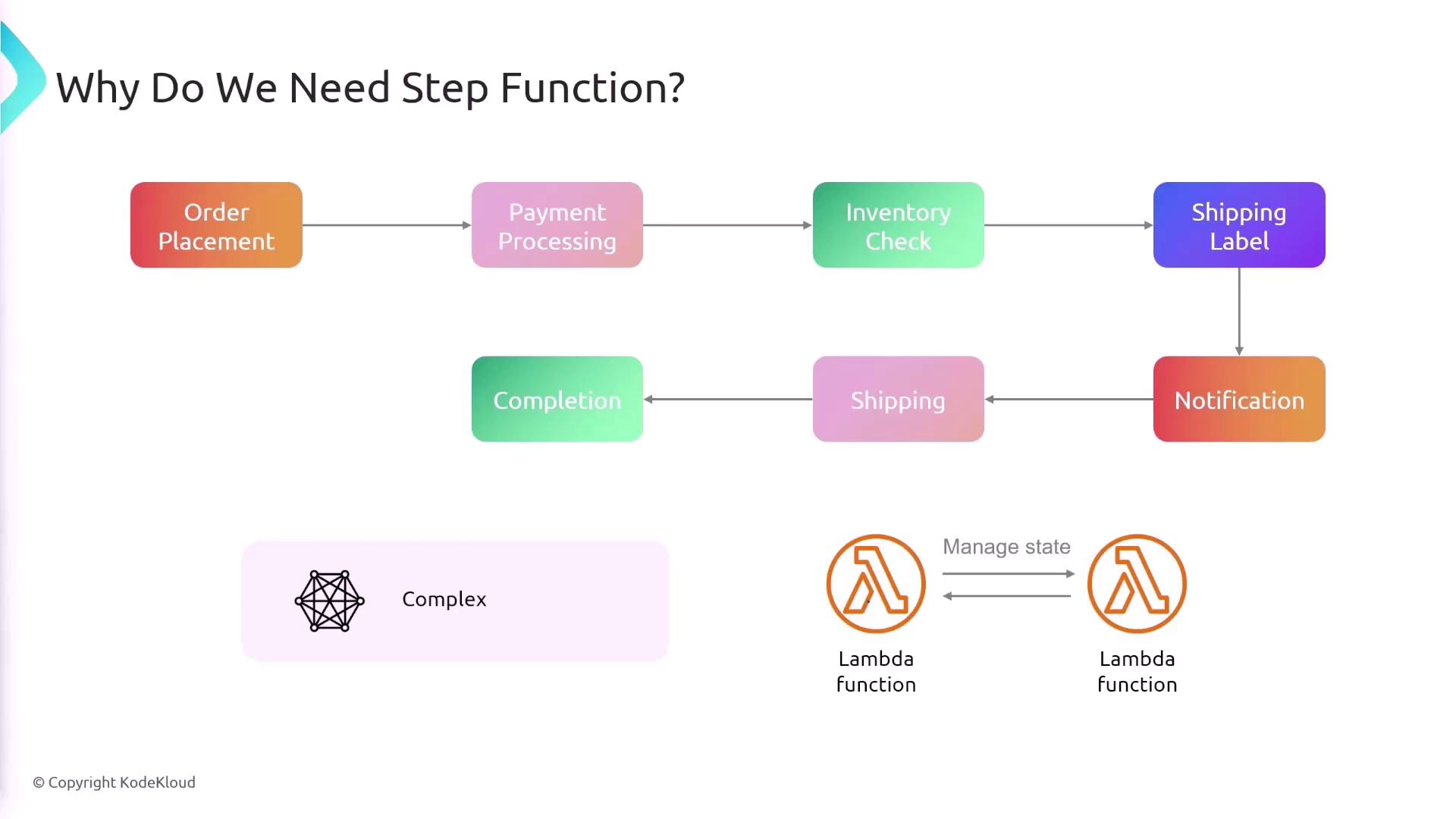
Key Features of AWS Step Functions
AWS Step Functions offer several features that make managing complex, long-running workflows easier:
- Workflow Orchestration and Visualization: Easily manage multi-step processes with a comprehensive visual representation.
- Error Handling and Retry Strategies: Automatically retry failed tasks and implement robust error handling.
- Parallel and Sequential Task Execution: Run tasks concurrently or in sequence, according to your business logic.
- Intuitive Workflow Editor: Configure workflows effortlessly using a drag and drop interface.

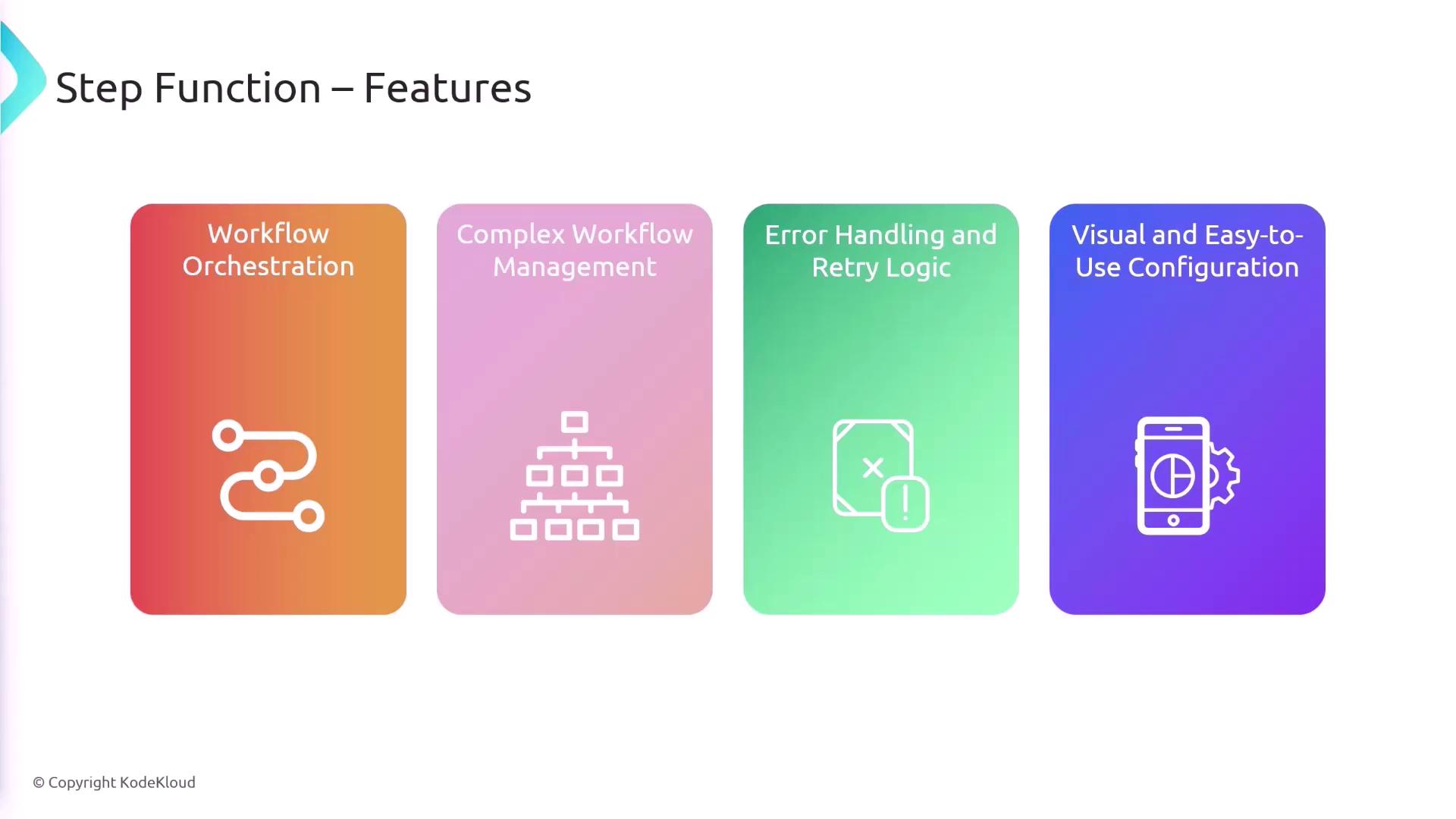
Additional Benefits
AWS Step Functions also support scalable and highly available architectures, ensuring your workflows run reliably in production environments.
Implementation Example: Order Management Workflow
Consider an order placement workflow that triggers an AWS Step Functions process. The workflow might include the following steps:
- Order Placement: A Lambda function manages the initial order placement.
- Payment Processing: Two tasks—credit card processing and fraud detection—run concurrently.
- Inventory Check: Once both payment tasks complete, the system verifies inventory levels.
- Shipping and Notification: The workflow concurrently generates a shipping label and sends notifications through email or SNS.
- Completion: Upon shipment confirmation, the order fulfillment process is finalized.
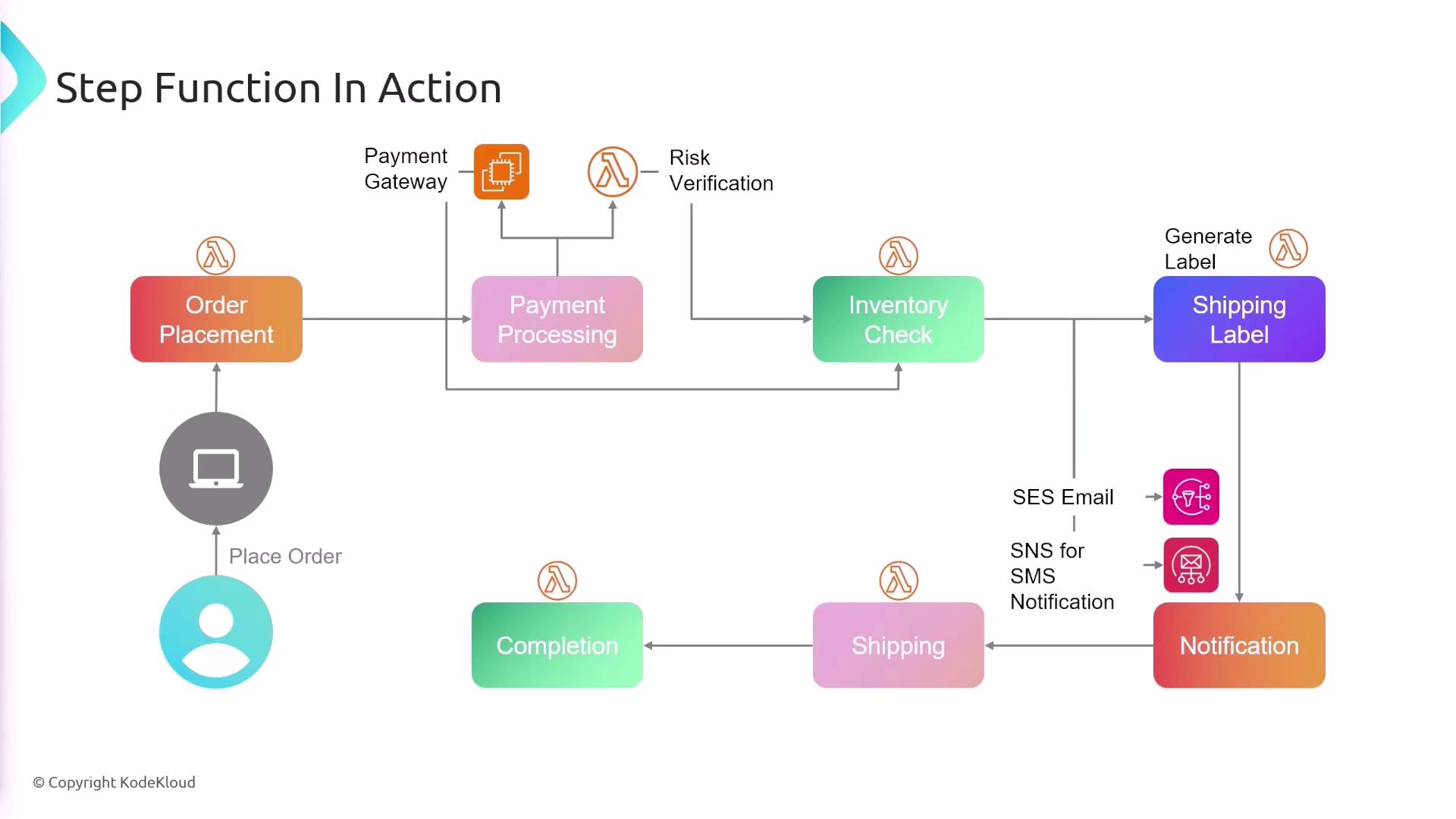
Use Case: Content Compliance
Another application scenario is processing user-uploaded content. When content is uploaded, a Step Functions workflow can automatically analyze it for compliance. Depending on the analysis:
- If the content passes, it is published immediately, and the user is notified.
- If the content is flagged for review, it is held for administrative approval.
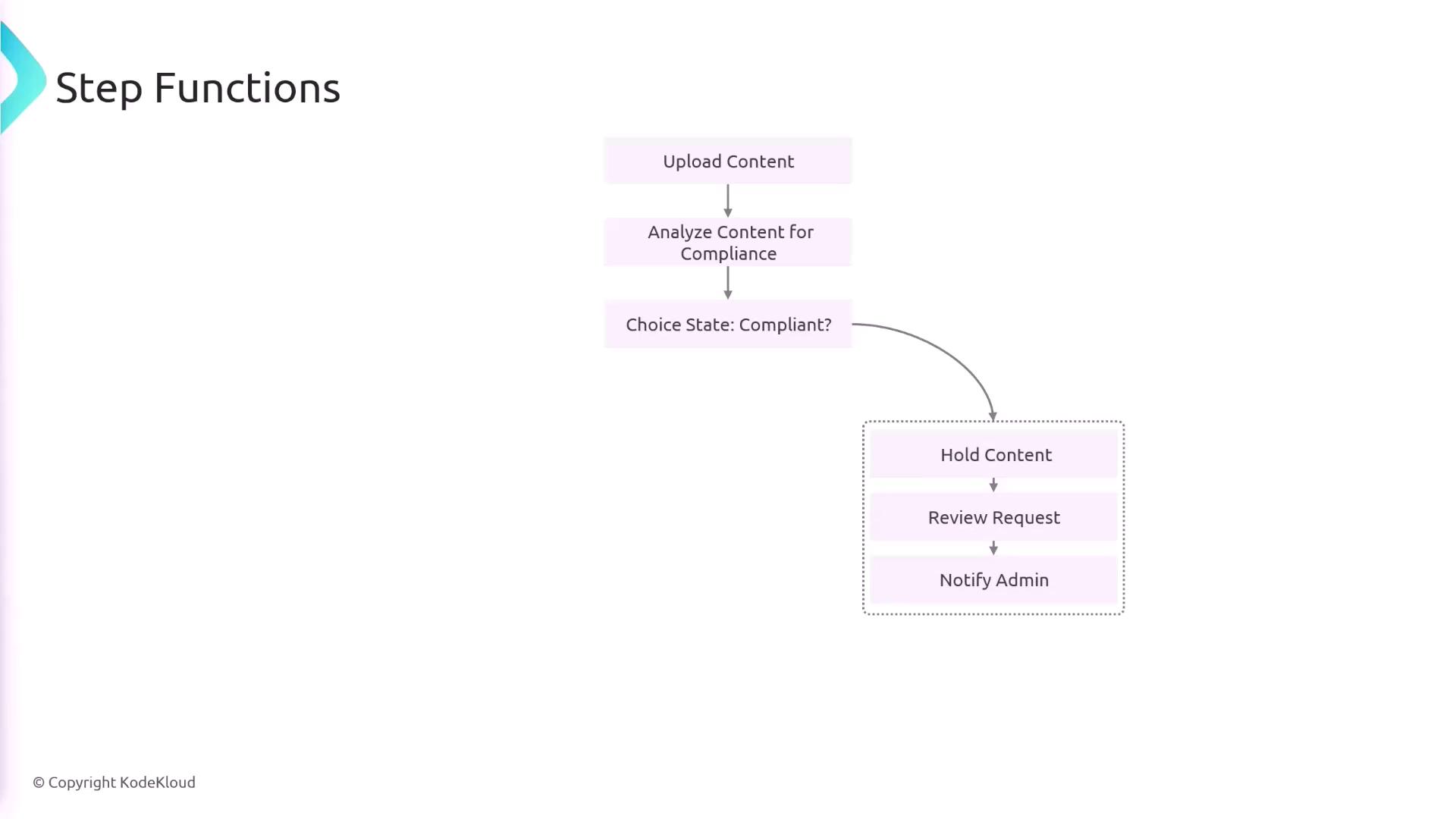
Workflow States Overview
Within a Step Functions workflow, each step is defined as a state. Common state types include:
- Pass: Forwards input without processing.
- Choice: Implements conditional logic for decision-making.
- Fail: Terminates the workflow with a failure status.
- Succeed: Completes the workflow successfully.
- Map: Iterates over a dataset (e.g., processing multiple video resolutions).
- Parallel: Executes multiple tasks concurrently.
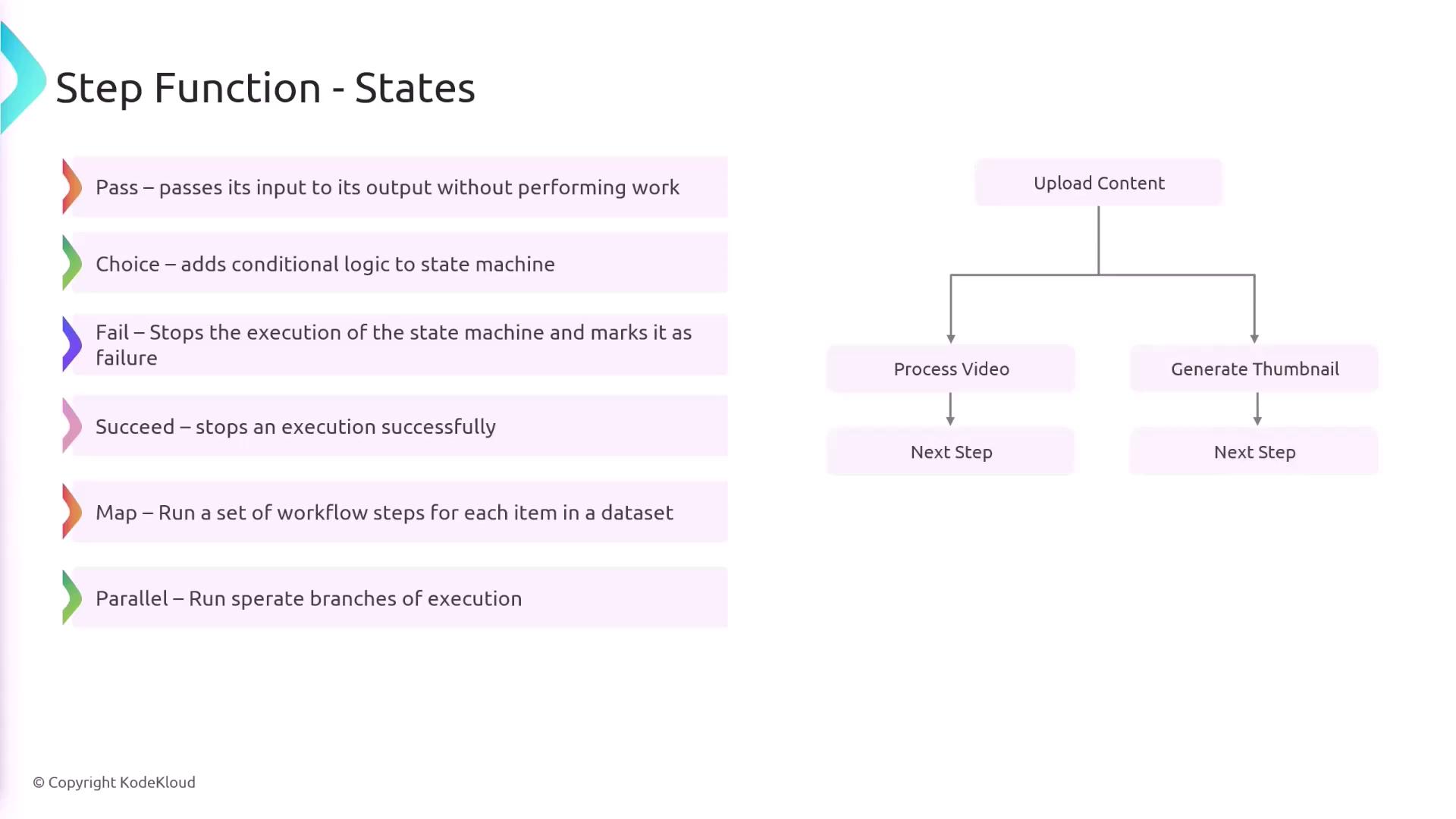
When a task fails, retry functionality can automatically reattempt the task a specified number of times. If retries still fail, error-handling steps—such as sending an email notification—can be executed to capture and address the failure.
Handling External Processes with Task Tokens
Certain use cases require the workflow to pause while waiting for an external process or human approval. This is implemented using task tokens, which allow the workflow to wait for a callback. For instance, in a credit check process:
- A task token is sent to an external system via SQS.
- The workflow waits until a response is received.
Below is an example configuration for a task waiting for a response via SQS:
{
"Resource": "arn:aws:states::sqs:sendMessage.waitForTaskToken",
"Parameters": {
"QueueUrl": "https://sqs.REGION.amazonaws.com/ACCOUNT_ID/myQueue",
"MessageBody": {
"Input.$": "$",
"TaskToken.$": "$$.Task.Token"
}
}
}
After the credit check is performed externally, the response along with the task token is sent back as shown below:
{
"output": "CreditAccepted",
"taskToken": "ASHDOIASHDOIASHDLKASNLKAHEOASIE"
}
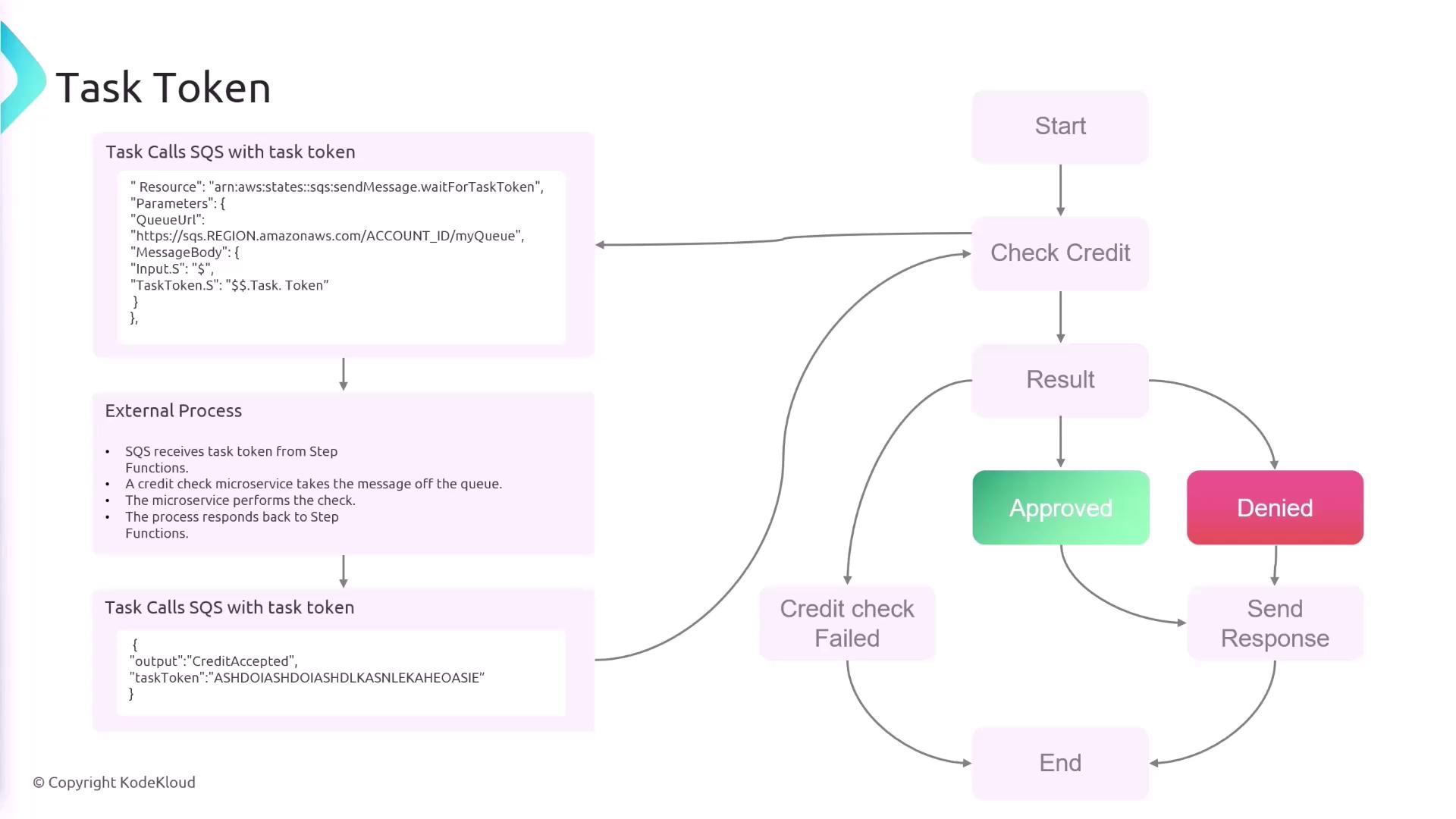
Summary
AWS Step Functions provide a robust and intuitive platform for building distributed applications. Key benefits include:
- Visual workflow orchestration.
- Support for complex state management using Pass, Choice, Succeed, Fail, Map, and Parallel states.
- Integrated error handling with retry and catch mechanisms.
- Seamless integration with other AWS services and support for callback tasks using task tokens.
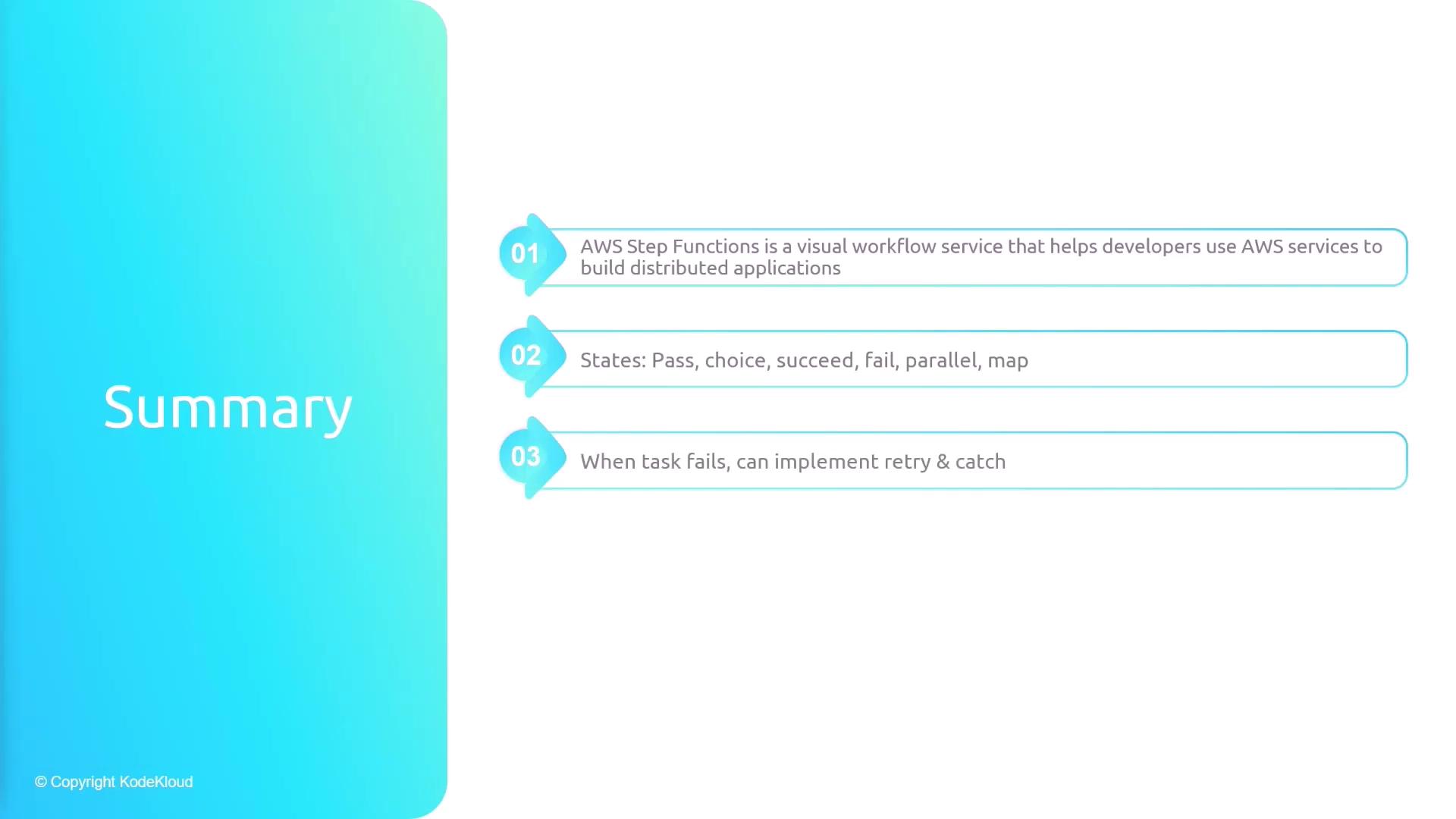
Get Started
Explore AWS Step Functions today to simplify and enhance the reliability of your application workflows. For more information, visit the AWS Step Functions Documentation.
Watch Video
Watch video content